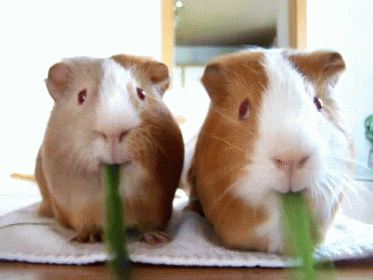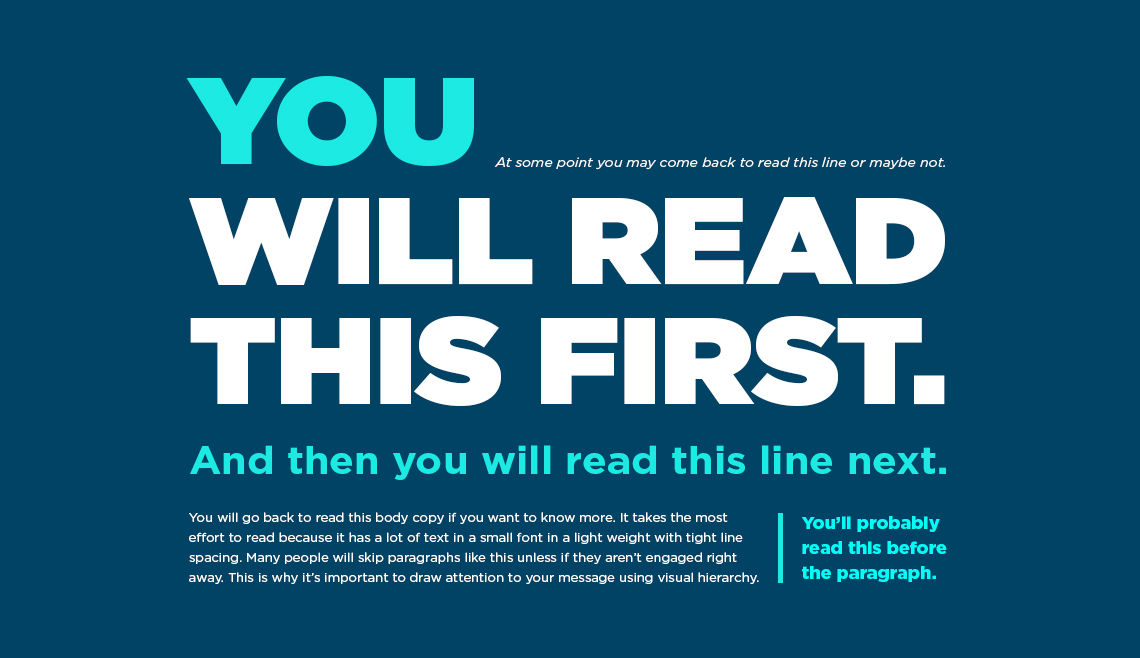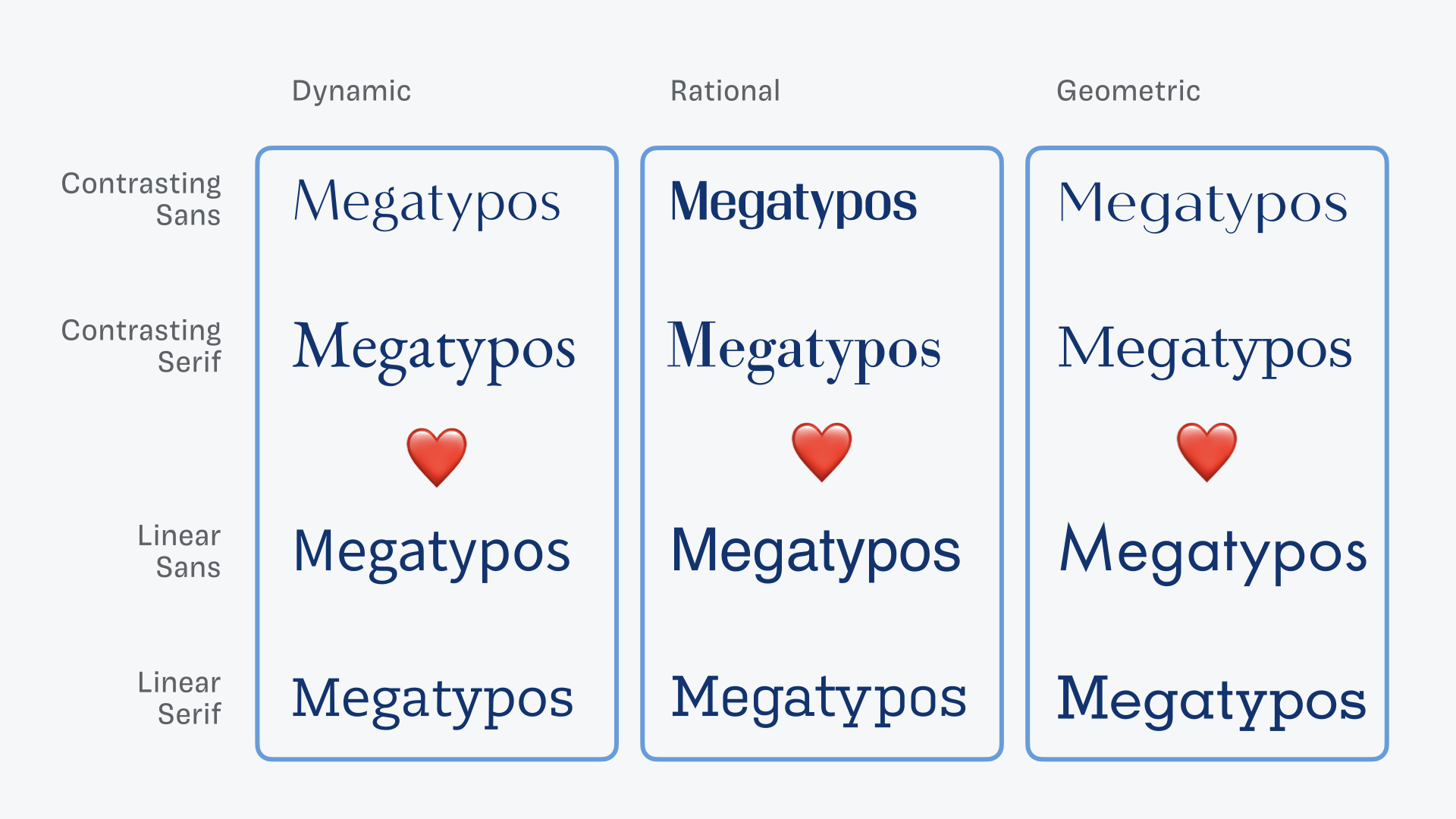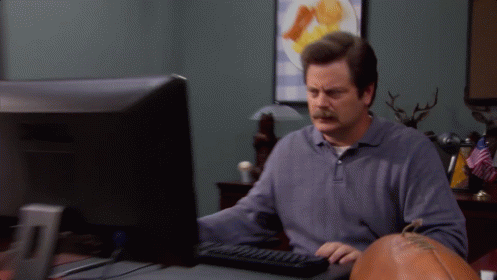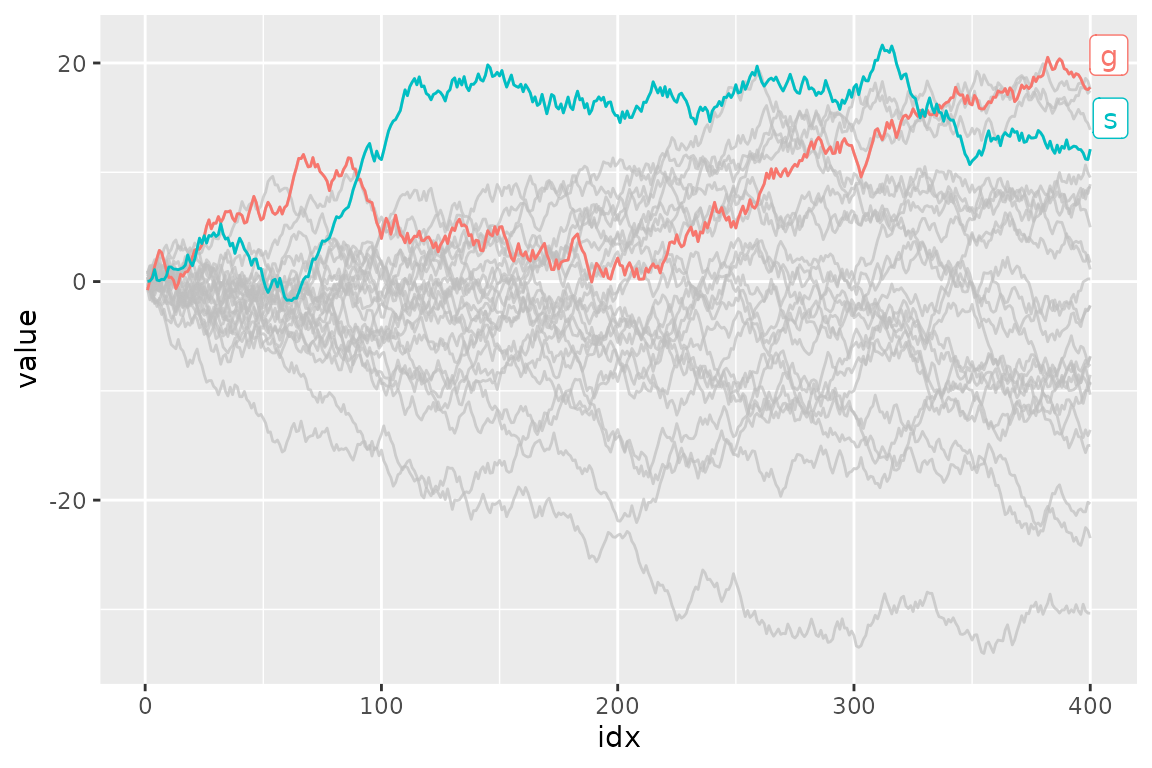Beautifully annotated: enhancing your ggplots with text
RLadies Cambridge | 23rd February 2023
Hi there 👋 !
👩 Cara Thompson
👩💻 Psychology PhD |> Analysis of postgraduate medical examinations |> Freelance data consultant specialising in dataviz and “enhanced” reproducible outputs
💙 Helping others maximise the impact of their expertise
Find out more: cararthompson.com/about
Today’s goal
To equip you with some design tips and coding tricks to make the most of text in your plots.
- Explore how to be less dependent on annotations (I know… trust me!)
- Illustrate ways in which we can use colour and fonts to add text hierarchy and story-enhancing annotations
- Provide you with reusable code to implement these tips, introducing
{ggtext},{geomtextpath} - Point to additional resources you can explore in your own time (links below slides)
- Give feedback on your own plots
But first, please suspend all disbelief…
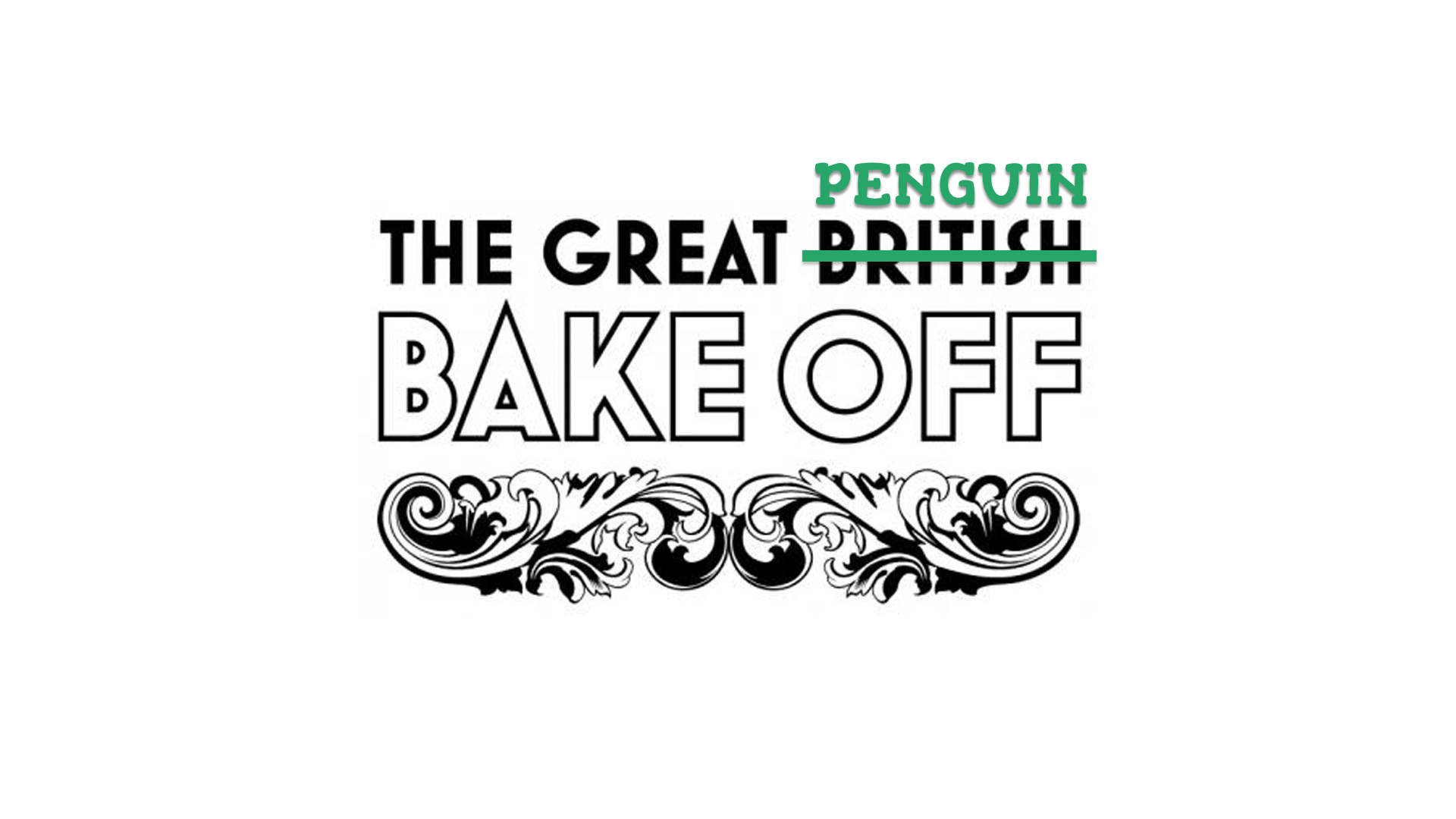
The Great Penguin Bake Off
The penguins had a baking competition to see which species could make the best banana loaf. Each species was given bananas of a different level of ripeness.

The Great Penguin Bake Off
The penguins had a baking competition to see which species could make the best banana loaf. Each species was given bananas of a different level of ripeness.

The Great Penguin Bake Off
The Adelie penguins decided to experiment with different quantities of banana in their mix. Each island chose a different quantity.

The Great Penguin Bake Off
The Adelie penguins decided to experiment with different quantities of banana in their mix. Each island chose a different quantity.

The Great Penguin Bake Off
The penguins also baked their cakes for different amounts of time. Here are the mean durations per species. Which species left their cakes in the oven for longest?

The Great Penguin Bake Off
The penguins also baked their cakes for different amounts of time. Here are the mean durations per species. Which species left their cakes in the oven for longest?


Five tips for beautiful annotations
#1 - Use colour and orientation purposefully
#2 - Add text hierarchy
#3 - Reduce unnecessary eye movement
#4 - Highlight important patterns
#5 - See how much you can declutter
Bonus track - {gghighlight}, Tee pipe and curved arrows
Let’s get coding!
Setting up our first plot
Setting up our first plot
With a few tips along the way
Setting up our first plot
With a few tips along the way
Setting up our first plot
With a few tips along the way
Setting up our first plot
Mini tip: get rid of abbreviations
ToothGrowth %>%
mutate(supplement =
case_when(supp == "OJ" ~ "Orange Juice",
supp == "VC" ~ "Vitamin C",
TRUE ~ as.character(supp))) %>%
group_by(supplement, dose) %>%
summarise(mean_length = mean(len)) %>%
ggplot(aes(x = dose,
y = mean_length,
fill = supplement)) +
geom_bar(stat = "identity",
position = "dodge",
colour = "#FFFFFF",
size = 2)Setting up our first plot
Mini tip: theme_minimal()
ToothGrowth %>%
mutate(supplement =
case_when(supp == "OJ" ~ "Orange Juice", supp == "VC" ~ "Vitamin C", TRUE ~ as.character(supp))) %>%
group_by(supplement, dose) %>%
summarise(mean_length = mean(len)) %>%
ggplot(aes(x = dose,
y = mean_length,
fill = supplement)) +
geom_bar(stat = "identity",
position = "dodge",
colour = "#FFFFFF",
size = 2) +
theme_minimal()Setting up our first plot
Turning Dose into a categorical variable (fear not!)
ToothGrowth %>%
mutate(supplement = case_when(supp == "OJ" ~ "Orange Juice", supp == "VC" ~ "Vitamin C", TRUE ~ as.character(supp))) %>%
group_by(supplement, dose) %>%
summarise(mean_length = mean(len)) %>%
mutate(categorical_dose = factor(dose)) %>%
ggplot(aes(x = categorical_dose,
y = mean_length,
fill = supplement)) +
geom_bar(stat = "identity",
position = "dodge",
colour = "#FFFFFF",
size = 2) +
theme_minimal()Setting up our first plot
Turning Dose into a categorical variable (fear not!) + facetting
ToothGrowth %>%
mutate(supplement = case_when(supp == "OJ" ~ "Orange Juice", supp == "VC" ~ "Vitamin C", TRUE ~ as.character(supp))) %>%
group_by(supplement, dose) %>%
summarise(mean_length = mean(len)) %>%
mutate(categorical_dose = factor(dose)) %>%
ggplot(aes(x = categorical_dose,
y = mean_length,
fill = supplement)) +
geom_bar(stat = "identity",
position = "dodge",
colour = "#FFFFFF",
size = 2) +
facet_wrap(supplement ~ ., ncol = 1) +
theme_minimal()Setting up our first plot
Adding some text (finally!)
ToothGrowth %>%
mutate(supplement = case_when(supp == "OJ" ~ "Orange Juice", supp == "VC" ~ "Vitamin C", TRUE ~ as.character(supp))) %>%
group_by(supplement, dose) %>%
summarise(mean_length = mean(len)) %>%
mutate(categorical_dose = factor(dose)) %>%
ggplot(aes(x = categorical_dose,
y = mean_length,
fill = supplement)) +
geom_bar(stat = "identity",
position = "dodge",
colour = "#FFFFFF",
size = 2) +
labs(x = "Dose",
y = "Mean length (mm)",
title = "In smaller doses, Orange Juice was associated with greater mean tooth growth,
compared to equivalent doses of Vitamin C",
subtitle = "With the highest dose, the mean recorded length was almost identical.") +
facet_wrap(supplement ~ ., ncol = 1) +
theme_minimal()#1 - Use colour and orientation purposefully
Legend + facet strip + colour + title… Wait, which one is which?
#1 - Use colour and orientation purposefully
- Orange juice is… orange!
- Vitamin C is… also orange, but more red and “aggressive”
- Those green leaves look nice with those colours…
- imagecolorpicker.com
#1 - Use colour and orientation purposefully
Generating a colour palette, starting with orange juice! #fab909
[1] "#DB5A05" "#E93603" "#F71201"[1] "#3C6B30" "#0C1509"[1] "#0C1509" "#323A30" "#595F57" "#80857F" "#A7AAA6" "#CED0CD"#1 - Use colour and orientation purposefully
Creating a named vector, for ease later

#1 - Use colour and orientation purposefully
Back to the plot!
ToothGrowth %>%
mutate(supplement = case_when(supp == "OJ" ~ "Orange Juice", supp == "VC" ~ "Vitamin C", TRUE ~ as.character(supp))) %>%
group_by(supplement, dose) %>%
summarise(mean_length = mean(len)) %>%
mutate(categorical_dose = factor(dose)) %>%
ggplot(aes(x = categorical_dose,
y = mean_length,
fill = supplement)) +
geom_bar(stat = "identity",
position = "dodge",
colour = "#FFFFFF",
size = 2) +
labs(x = "Dose",
y = "Mean length (mm)",
title = "In smaller doses, Orange Juice was associated with greater mean tooth growth,
compared to equivalent doses of Vitamin C",
subtitle = "With the highest dose, the mean recorded length was almost identical.") +
facet_wrap(supplement ~ ., ncol = 1) +
theme_minimal()#1 - Use colour and orientation purposefully
Add in our colours
ToothGrowth %>%
mutate(supplement = case_when(supp == "OJ" ~ "Orange Juice", supp == "VC" ~ "Vitamin C", TRUE ~ as.character(supp))) %>%
group_by(supplement, dose) %>%
summarise(mean_length = mean(len)) %>%
mutate(categorical_dose = factor(dose)) %>%
ggplot(aes(x = categorical_dose,
y = mean_length,
fill = supplement)) +
geom_bar(stat = "identity",
position = "dodge",
colour = "#FFFFFF",
size = 2) +
labs(x = "Dose",
y = "Mean length (mm)",
title = "In smaller doses, Orange Juice was associated with greater mean tooth growth,
compared to equivalent doses of Vitamin C",
subtitle = "With the highest dose, the mean recorded length was almost identical.") +
scale_fill_manual(values = vit_c_palette) +
facet_wrap(supplement ~ ., ncol = 1) +
theme_minimal()#1 - Use colour and orientation purposefully
Use transparency to indicate dose
ToothGrowth %>%
mutate(supplement = case_when(supp == "OJ" ~ "Orange Juice", supp == "VC" ~ "Vitamin C", TRUE ~ as.character(supp))) %>%
group_by(supplement, dose) %>%
summarise(mean_length = mean(len)) %>%
mutate(categorical_dose = factor(dose)) %>%
ggplot(aes(x = categorical_dose,
y = mean_length,
fill = supplement)) +
geom_bar(aes(alpha = dose),
stat = "identity",
position = "dodge",
colour = "#FFFFFF",
size = 2) +
labs(x = "Dose",
y = "Mean length (mm)",
title = "In smaller doses, Orange Juice was associated with greater mean tooth growth,
compared to equivalent doses of Vitamin C",
subtitle = "With the highest dose, the mean recorded length was almost identical.") +
scale_fill_manual(values = vit_c_palette) +
facet_wrap(supplement ~ ., ncol = 1) +
theme_minimal()#1 - Use colour and orientation purposefully
Use transparency to indicate dose - within limits
ToothGrowth %>%
mutate(supplement = case_when(supp == "OJ" ~ "Orange Juice", supp == "VC" ~ "Vitamin C", TRUE ~ as.character(supp))) %>%
group_by(supplement, dose) %>%
summarise(mean_length = mean(len)) %>%
mutate(categorical_dose = factor(dose)) %>%
ggplot(aes(x = categorical_dose,
y = mean_length,
fill = supplement)) +
geom_bar(aes(alpha = dose),
stat = "identity",
position = "dodge",
colour = "#FFFFFF",
size = 2) +
labs(x = "Dose",
y = "Mean length (mm)",
title = "In smaller doses, Orange Juice was associated with greater mean tooth growth,
compared to equivalent doses of Vitamin C",
subtitle = "With the highest dose, the mean recorded length was almost identical.") +
scale_fill_manual(values = vit_c_palette) +
scale_alpha(range = c(0.33, 1)) +
facet_wrap(supplement ~ ., ncol = 1) +
theme_minimal()#1 - Use colour and orientation purposefully
What is the dose unit again? ?ToothGrowth
ToothGrowth %>%
mutate(supplement = case_when(supp == "OJ" ~ "Orange Juice", supp == "VC" ~ "Vitamin C", TRUE ~ as.character(supp))) %>%
group_by(supplement, dose) %>%
summarise(mean_length = mean(len)) %>%
mutate(categorical_dose = factor(dose)) %>%
ggplot(aes(x = categorical_dose,
y = mean_length,
fill = supplement)) +
geom_bar(aes(alpha = dose),
stat = "identity",
position = "dodge",
colour = "#FFFFFF",
size = 2) +
labs(x = "Dose",
y = "Mean length (mm)",
title = "In smaller doses, Orange Juice was associated with greater mean tooth growth,
compared to equivalent doses of Vitamin C",
subtitle = "With the highest dose, the mean recorded length was almost identical.") +
scale_fill_manual(values = vit_c_palette) +
scale_alpha(range = c(0.33, 1)) +
scale_x_discrete(breaks = c("0.5", "1", "2"),
labels = function(x)
paste0(x, " mg/day")) +
facet_wrap(supplement ~ ., ncol = 1) +
theme_minimal()#1 - Use colour and orientation purposefully
Legend has always been redundant!
ToothGrowth %>%
mutate(supplement = case_when(supp == "OJ" ~ "Orange Juice", supp == "VC" ~ "Vitamin C", TRUE ~ as.character(supp))) %>%
group_by(supplement, dose) %>%
summarise(mean_length = mean(len)) %>%
mutate(categorical_dose = factor(dose)) %>%
ggplot(aes(x = categorical_dose,
y = mean_length,
fill = supplement)) +
geom_bar(aes(alpha = dose),
stat = "identity",
position = "dodge",
colour = "#FFFFFF",
size = 2) +
labs(x = "Dose",
y = "Mean length (mm)",
title = "In smaller doses, Orange Juice was associated with greater mean tooth growth,
compared to equivalent doses of Vitamin C",
subtitle = "With the highest dose, the mean recorded length was almost identical.") +
scale_fill_manual(values = vit_c_palette) +
scale_alpha(range = c(0.33, 1)) +
facet_wrap(supplement ~ ., ncol = 1) +
scale_x_discrete(breaks = c("0.5", "1", "2"), labels = function(x) paste0(x, " mg/day")) +
theme_minimal() +
theme(legend.position = "none")#1 - Use colour and orientation purposefully
And I find this so much less confusing!
ToothGrowth %>%
mutate(supplement = case_when(supp == "OJ" ~ "Orange Juice", supp == "VC" ~ "Vitamin C", TRUE ~ as.character(supp))) %>%
group_by(supplement, dose) %>%
summarise(mean_length = mean(len)) %>%
mutate(categorical_dose = factor(dose)) %>%
ggplot(aes(x = categorical_dose,
y = mean_length,
fill = supplement)) +
geom_bar(aes(alpha = dose),
stat = "identity",
position = "dodge",
colour = "#FFFFFF",
size = 2) +
labs(x = "Dose",
y = "Mean length (mm)",
title = "In smaller doses, Orange Juice was associated with greater mean tooth growth,
compared to equivalent doses of Vitamin C",
subtitle = "With the highest dose, the mean recorded length was almost identical.") +
scale_fill_manual(values = vit_c_palette) +
scale_alpha(range = c(0.4, 1)) +
scale_x_discrete(breaks = c("0.5", "1", "2"), labels = function(x) paste0(x, " mg/day")) +
coord_flip() +
facet_wrap(supplement ~ ., ncol = 1) +
theme_minimal() +
theme(legend.position = "none")#1 - Use colour and orientation purposefully
So much clearer, and we haven’t even done any annotating!
Five tips for beautiful annotations
#1 - Use colour and orientation purposefully
#2 - Add text hierarchy
#3 - Reduce unnecessary eye movement
#4 - Highlight important patterns
#5 - See how much you can declutter
Bonus track - {gghighlight}, Tee pipe and curved arrows
#2 - Add text hierarchy
Find out more: https://www.interaction-design.org/
#2 - Add text hierarchy
Time to start playing with theme()!
basic_plot <- ToothGrowth %>%
mutate(supplement = case_when(supp == "OJ" ~ "Orange Juice", supp == "VC" ~ "Vitamin C", TRUE ~ as.character(supp))) %>%
group_by(supplement, dose) %>%
summarise(mean_length = mean(len)) %>%
mutate(categorical_dose = factor(dose)) %>%
ggplot(aes(x = categorical_dose,
y = mean_length,
fill = supplement)) +
geom_bar(aes(alpha = dose),
stat = "identity",
position = "dodge",
colour = "#FFFFFF",
size = 2) +
labs(x = "Dose",
y = "Mean length (mm)",
title = "In smaller doses, Orange Juice was associated with greater mean tooth growth,
compared to equivalent doses of Vitamin C",
subtitle = "With the highest dose, the mean recorded length was almost identical.") +
scale_fill_manual(values = vit_c_palette) +
scale_alpha(range = c(0.4, 1)) +
scale_x_discrete(breaks = c("0.5", "1", "2"), labels = function(x) paste0(x, " mg/day")) +
coord_flip() +
facet_wrap(supplement ~ ., ncol = 1) +
theme_minimal(base_size = 15) +
theme(legend.position = "none")
basic_plot#2 - Add text hierarchy
Time to start playing with theme()!
#2 - Add text hierarchy
Time to start playing with theme()!
#2 - Add text hierarchy
Time to start playing with theme()!
#2 - Add text hierarchy
Move away from the default fonts
#2 - Add text hierarchy
Move away from the default fonts
basic_plot +
theme(legend.position = "none",
text = element_text(colour = vit_c_palette["light_text"],
family = "Cabin"),
plot.title = element_text(colour = vit_c_palette["dark_text"],
size = rel(1.5),
face = "bold",
family = "Enriqueta"),
strip.text = element_text(family = "Enriqueta",
colour = vit_c_palette["light_text"],
size = rel(1.1), face = "bold"),
axis.text = element_text(colour = vit_c_palette["light_text"]))#2 - Add text hierarchy
Choosing fonts can be tricky!
- Brand guidelines
- Datawrapper guidance - avoid fonts that are too wide/narrow!
- Websites + inspector tool
- Oliver Schöndorfer’s exploration of the Font Matrix
Find out more: pimpmytype.com/font-matrix/
#2 - Add text hierarchy
Getting custom fonts to work can be frustrating!
Install fonts locally +
{ragg}+{systemfonts}+{textshaping}+ Set graphics device to “AGG” + 🤞
#2 - Add text hierarchy
Give everything some space to breathe
basic_plot +
theme(legend.position = "none",
text = element_text(colour = vit_c_palette["light_text"],
family = "Cabin"),
plot.title = element_text(colour = vit_c_palette["dark_text"],
size = rel(1.5),
face = "bold",
family = "Enriqueta",
lineheight = 1.3,
margin = margin(0.5, 0, 1, 0, "lines")),
plot.subtitle = element_text(size = rel(1.1), lineheight = 1.3,
margin = margin(0, 0, 1, 0, "lines")),
strip.text = element_text(family = "Enriqueta",
colour = vit_c_palette["light_text"],
size = rel(1.1), face = "bold",
margin = margin(2, 0, 0.5, 0, "lines")),
axis.text = element_text(colour = vit_c_palette["light_text"]))#2 - Add text hierarchy
Remove unnecessary text
basic_plot +
theme(legend.position = "none",
text = element_text(colour = vit_c_palette["light_text"],
family = "Cabin"),
axis.title.y = element_blank(),
plot.title = element_text(colour = vit_c_palette["dark_text"],
size = rel(1.5),
face = "bold",
family = "Enriqueta",
lineheight = 1.3,
margin = margin(0.5, 0, 1, 0, "lines")),
plot.subtitle = element_text(size = rel(1.1), lineheight = 1.3,
margin = margin(0, 0, 1, 0, "lines")),
strip.text = element_text(family = "Enriqueta",
colour = vit_c_palette["light_text"],
size = rel(1.1), face = "bold",
margin = margin(2, 0, 0.5, 0, "lines")),
axis.text = element_text(colour = vit_c_palette["light_text"]))#2 - Add text hierarchy
Watch out for that title!
basic_plot +
labs(title = "In smaller doses, Orange Juice was associated with greater mean tooth growth,
compared to equivalent doses of Vitamin C") +
theme(legend.position = "none",
text = element_text(colour = vit_c_palette["light_text"],
family = "Cabin"),
axis.title.y = element_blank(),
plot.title = element_text(colour = vit_c_palette["dark_text"],
size = 36,
face = "bold",
family = "Enriqueta",
lineheight = 1.3,
margin = margin(0.5, 0, 1, 0, "lines")),
plot.subtitle = element_text(size = rel(1.1), lineheight = 1.3,
margin = margin(0, 0, 1, 0, "lines")),
strip.text = element_text(family = "Enriqueta",
colour = vit_c_palette["light_text"],
size = rel(1.1), face = "bold",
margin = margin(2, 0, 0.5, 0, "lines")),
axis.text = element_text(colour = vit_c_palette["light_text"]))#2 - Add text hierarchy
Watch out for that title!
basic_plot +
labs(title = "In smaller doses, Orange Juice was associated with greater mean tooth growth, compared to equivalent doses of Vitamin C") +
theme(legend.position = "none",
text = element_text(colour = vit_c_palette["light_text"],
family = "Cabin"),
axis.title.y = element_blank(),
plot.title = element_text(colour = vit_c_palette["dark_text"],
size = rel(1.5),
face = "bold",
family = "Enriqueta",
lineheight = 1.3,
margin = margin(0.5, 0, 1, 0, "lines")),
plot.subtitle = element_text(size = rel(1.1), lineheight = 1.3,
margin = margin(0, 0, 1, 0, "lines")),
strip.text = element_text(family = "Enriqueta",
colour = vit_c_palette["light_text"],
size = rel(1.1), face = "bold",
margin = margin(2, 0, 0.5, 0, "lines")),
axis.text = element_text(colour = vit_c_palette["light_text"]))#2 - Add text hierarchy
I ❤️ 📦 {ggtext}
basic_plot +
labs(title = "In smaller doses, Orange Juice was associated with greater mean tooth growth, compared to equivalent doses of Vitamin C") +
theme(legend.position = "none",
text = element_text(colour = vit_c_palette["light_text"],
family = "Cabin"),
axis.title.y = element_blank(),
plot.title = ggtext::element_textbox_simple(
colour = vit_c_palette["dark_text"],
size = rel(1.5),
face = "bold",
family = "Enriqueta",
lineheight = 1.3,
margin = margin(0.5, 0, 1, 0, "lines")),
plot.subtitle = ggtext::element_textbox_simple(
size = rel(1.1),
lineheight = 1.3,
margin = margin(0, 0, 1, 0, "lines")),
strip.text = element_text(family = "Enriqueta",
colour = vit_c_palette["light_text"],
size = rel(1.1), face = "bold",
margin = margin(2, 0, 0.5, 0, "lines")),
axis.text = element_text(colour = vit_c_palette["light_text"]))#2 - Add text hierarchy + colour!
Hello, HTML + CSS!
We can make text <span style='color:green'>green</span> and also <span style='color:green; font-size:60pt'>really big</span>! 🤯
We can make text green and also really big! 🤯
#2 - Add text hierarchy + colour!
I ❤️ 📦 {ggtext}
basic_plot +
labs(title =
paste0("In smaller doses, **<span style='color:",
vit_c_palette["Orange Juice"], "'>Orange Juice</span>**
was associated with greater mean tooth growth,
compared to equivalent doses of **<span style='color:",
vit_c_palette["Vitamin C"], "'>Vitamin C</span>**")
) +
theme(legend.position = "none",
text = element_text(colour = vit_c_palette["light_text"],
family = "Cabin"),
axis.title.y = element_blank(),
plot.title = ggtext::element_textbox_simple(colour = vit_c_palette["dark_text"],
size = rel(1.5),
face = "bold",
family = "Enriqueta",
lineheight = 1.3,
margin = margin(0.5, 0, 1, 0, "lines")),
plot.subtitle = ggtext::element_textbox_simple(family = "Cabin", size = rel(1.1), lineheight = 1.3,
margin = margin(0, 0, 1, 0, "lines")),
strip.text = element_text(family = "Enriqueta",
colour = vit_c_palette["light_text"],
size = rel(1.1), face = "bold",
margin = margin(2, 0, 0.5, 0, "lines")),
axis.text = element_text(colour = vit_c_palette["light_text"]))#2 - Add text hierarchy
See for yourselves!
Five tips for beautiful annotations
#1 - Use colour and orientation purposefully
#2 - Add text hierarchy
#3 - Reduce unnecessary eye movement
#4 - Highlight important patterns
#5 - See how much you can declutter
Bonus track - {gghighlight} & curved arrows
#3 - Reduce unnecessary eye movement
We’ve made it easy to see what’s what. Now, let’s make it even easier to compare values.
#3 - Reduce unnecessary eye movement
We’ve made it easy to see what’s what. Now, let’s make it even easier to compare values.
#3 - Reduce unnecessary eye movement
We’ve made it easy to see what’s what. Now, let’s make it even easier to compare values.
#3 - Reduce unnecessary eye movement
Time to add some text boxes!
themed_plot +
scale_y_continuous(expand = c(0, 0.5)) +
theme(strip.text = element_text(family = "Enriqueta", colour = vit_c_palette["light_text"], size = rel(1.1), face = "bold", hjust = 0.03, margin = margin(2, 0, 0.5, 0, "lines"))) +
# x (dose) and y (mean_length) are already
# set in the global ggplot() call!
ggtext::geom_textbox(aes(label = mean_length))#3 - Reduce unnecessary eye movement
Time to add some text boxes!
themed_plot +
scale_y_continuous(expand = c(0, 0.5)) +
theme(strip.text = element_text(family = "Enriqueta", colour = vit_c_palette["light_text"], size = rel(1.1), face = "bold", hjust = 0.03, margin = margin(2, 0, 0.5, 0, "lines"))) +
ggtext::geom_textbox(aes(label = mean_length),
size = 6,
halign = 1,
hjust = 1)Find out more: Alignment Cheatsheet
#3 - Reduce unnecessary eye movement
Time to add some text boxes!
themed_plot +
scale_y_continuous(expand = c(0, 0.5)) +
theme(strip.text = element_text(family = "Enriqueta", colour = vit_c_palette["light_text"], size = rel(1.1), face = "bold", hjust = 0.03, margin = margin(2, 0, 0.5, 0, "lines"))) +
ggtext::geom_textbox(aes(label = mean_length),
size = 6,
halign = 1,
hjust = 1,
fill = NA,
box.colour = NA)#3 - Reduce unnecessary eye movement
Time to add some text boxes!
themed_plot +
scale_y_continuous(expand = c(0, 0.5)) +
theme(strip.text = element_text(family = "Enriqueta", colour = vit_c_palette["light_text"], size = rel(1.1), face = "bold", hjust = 0.03, margin = margin(2, 0, 0.5, 0, "lines"))) +
ggtext::geom_textbox(aes(label = mean_length),
size = 6,
halign = 1,
hjust = 1,
fill = NA,
box.colour = NA,
family = "Cabin",
colour = "#FFFFFF",
fontface = "bold")#3 - Reduce unnecessary eye movement
Now for the fun stuff…
themed_plot +
scale_y_continuous(expand = c(0, 0.5)) +
theme(strip.text = element_text(family = "Enriqueta", colour = vit_c_palette["light_text"], size = rel(1.1), face = "bold", hjust = 0.03, margin = margin(2, 0, 0.5, 0, "lines"))) +
ggtext::geom_textbox(aes(
label = mean_length,
hjust = case_when(mean_length < 15 ~ 0,
TRUE ~ 1),
halign = case_when(mean_length < 15 ~ 0,
TRUE ~ 1)),
size = 6,
fill = NA,
box.colour = NA,
family = "Cabin",
fontface = "bold")#3 - Reduce unnecessary eye movement
Now for the fun stuff…
themed_plot +
scale_y_continuous(expand = c(0, 0.5)) +
theme(strip.text = element_text(family = "Enriqueta", colour = vit_c_palette["light_text"], size = rel(1.1), face = "bold", hjust = 0.03, margin = margin(2, 0, 0.5, 0, "lines"))) +
ggtext::geom_textbox(aes(
label = mean_length,
hjust = case_when(mean_length < 15 ~ 0,
TRUE ~ 1),
halign = case_when(mean_length < 15 ~ 0,
TRUE ~ 1),
colour = case_when(mean_length > 15 ~ "#FFFFFF",
TRUE ~ vit_c_palette[supplement])),
size = 6,
fill = NA,
box.colour = NA,
family = "Cabin",
fontface = "bold")#3 - Reduce unnecessary eye movement
??????
themed_plot +
scale_y_continuous(expand = c(0, 0.5)) +
theme(strip.text = element_text(family = "Enriqueta", colour = vit_c_palette["light_text"], size = rel(1.1), face = "bold", hjust = 0.03, margin = margin(2, 0, 0.5, 0, "lines"))) +
ggtext::geom_textbox(aes(
label = mean_length,
hjust = case_when(mean_length < 15 ~ 0,
TRUE ~ 1),
halign = case_when(mean_length < 15 ~ 0,
TRUE ~ 1),
colour = case_when(mean_length > 15 ~ "#FFFFFF",
TRUE ~ vit_c_palette[supplement])),
size = 6,
fill = NA,
box.colour = NA,
family = "Cabin",
fontface = "bold")#3 - Reduce unnecessary eye movement
scale_colour_identity() required!
themed_plot +
scale_y_continuous(expand = c(0, 0.5)) +
theme(strip.text = element_text(family = "Enriqueta", colour = vit_c_palette["light_text"], size = rel(1.1), face = "bold", hjust = 0.03, margin = margin(2, 0, 0.5, 0, "lines"))) +
scale_colour_identity() +
ggtext::geom_textbox(aes(
label = mean_length,
hjust = case_when(mean_length < 15 ~ 0,
TRUE ~ 1),
halign = case_when(mean_length < 15 ~ 0,
TRUE ~ 1),
colour = case_when(mean_length > 15 ~ "#FFFFFF",
TRUE ~ vit_c_palette[supplement])),
size = 6,
fill = NA,
box.colour = NA,
family = "Cabin",
fontface = "bold")#3 - Reduce unnecessary eye movement
We might as well add a bit of extra info (with text hierarchy!) to our labels…
themed_plot +
scale_y_continuous(expand = c(0, 0.5)) +
theme(strip.text = element_text(family = "Enriqueta", colour = vit_c_palette["light_text"], size = rel(1.1), face = "bold", hjust = 0.03, margin = margin(2, 0, 0.5, 0, "lines"))) +
scale_colour_identity() +
ggtext::geom_textbox(aes(
label = paste0("<span style=font-size:12pt>",
dose, "mg/day</span><br>",
mean_length, "mm"),
hjust = case_when(mean_length < 15 ~ 0,
TRUE ~ 1),
halign = case_when(mean_length < 15 ~ 0,
TRUE ~ 1),
colour = case_when(mean_length > 15 ~ "#FFFFFF",
TRUE ~ vit_c_palette[supplement])),
size = 6,
fill = NA,
box.colour = NA,
family = "Cabin",
fontface = "bold")Wait, but why?
#3 - Reduce unnecessary eye movement
Easier than you think and makes a big difference! 🦸
Five tips for beautiful annotations
#1 - Use colour and orientation purposefully
#2 - Add text hierarchy
#3 - Reduce unnecessary eye movement
#4 - Highlight important patterns
#5 - See how much you can declutter
Bonus track - {gghighlight}, Tee pipe and curved arrows
#4 - Highlight important patterns
“That’s all well and good, but we all know summary data can be misleading…”
Find out more: cararthompson.com/talks/nhsr2022-ggplot-themes
#4 - Highlight important patterns
I ❤️ 📦 {geomtextpath}
#4 - Highlight important patterns
I ❤️ 📦 {geomtextpath}
#4 - Highlight important patterns
I ❤️ 📦 {geomtextpath}
#4 - Highlight important patterns
I ❤️ 📦 {geomtextpath}
#4 - Highlight important patterns
More textboxes with markdown and conditional alignment (horizontal and vertical!)
themed_scatter_plot +
geomtextpath::geom_textline(stat = "smooth", aes(label = supplement),
hjust = 0.1,
vjust = 0.3,
fontface = "bold",
family = "Cabin") +
ggtext::geom_textbox(data = filter(min_max_gps,
dose %in% c(1, 2)),
aes(x = case_when(dose < 1.5 ~ dose + 0.05,
TRUE ~ dose - 0.05),
y = case_when(min_or_max == "max"~ len * 1.1,
TRUE ~ len * 0.9),
label = paste0("**<span style='font-family:Enriqueta'>",
guinea_pig_name,
"</span>** - ", len, " mm"),
hjust = case_when(dose < 1.5 ~ 0,
TRUE ~ 1),
halign = case_when(dose < 1.5 ~ 0,
TRUE ~ 1)),
family = "Cabin",
size = 4,
fill = NA,
box.colour = NA) +
scale_colour_manual(values = vit_c_palette)#4 - Highlight important patterns
Sometimes less is more!
themed_scatter_plot +
geomtextpath::geom_textline(stat = "smooth", aes(label = supplement),
hjust = 0.1,
vjust = 0.3,
fontface = "bold",
family = "Cabin") +
ggtext::geom_textbox(data = filter(min_max_gps,
dose == 2),
aes(x = case_when(dose < 1.5 ~ dose + 0.05,
TRUE ~ dose - 0.05),
y = case_when(min_or_max == "max"~ len * 1.1,
TRUE ~ len * 0.9),
label = paste0("**<span style='font-family:Enriqueta'>",
guinea_pig_name,
"</span>** - ", len, " mm"),
hjust = case_when(dose < 1.5 ~ 0,
TRUE ~ 1),
halign = case_when(dose < 1.5 ~ 0,
TRUE ~ 1)),
family = "Cabin",
size = 4,
fill = NA,
box.colour = NA) +
scale_colour_manual(values = vit_c_palette)#4 - Highlight important patterns
Same principle, let’s add in some arrows!
themed_scatter_plot +
geomtextpath::geom_textline(stat = "smooth", aes(label = supplement),
hjust = 0.1,
vjust = 0.3,
fontface = "bold",
family = "Cabin") +
ggtext::geom_textbox(data = filter(min_max_gps,
dose == 2),
aes(x = case_when(dose < 1.5 ~ dose + 0.05, TRUE ~ dose - 0.05),
y = case_when(min_or_max == "max"~ len * 1.1, TRUE ~ len * 0.9),
label = paste0("**<span style='font-family:Enriqueta'>", guinea_pig_name,"</span>** - ", len, " mm"),
hjust = case_when(dose < 1.5 ~ 0,TRUE ~ 1),
halign = case_when(dose < 1.5 ~ 0, TRUE ~ 1)),
family = "Cabin", size = 4, fill = NA, box.colour = NA) +
geom_curve(data = filter(min_max_gps,
dose == 2),
aes(x = case_when(dose < 1.5 ~ dose + 0.05,
TRUE ~ dose - 0.05),
y = case_when(min_or_max == "max"~ len * 1.1,
TRUE ~ len * 0.9),
xend = case_when(dose < 1.5 ~ dose + 0.02,
TRUE ~ dose - 0.02),
yend = case_when(min_or_max == "max"~ len + 0.5,
TRUE ~ len - 0.5)),
arrow = arrow(length = unit(0.1, "cm")),
alpha = 0.5) +
scale_colour_manual(values = vit_c_palette)#4 - Highlight important patterns
Same principle, let’s add in some arrows!
themed_scatter_plot +
geomtextpath::geom_textline(stat = "smooth", aes(label = supplement),
hjust = 0.1,
vjust = 0.3,
fontface = "bold",
family = "Cabin") +
ggtext::geom_textbox(data = filter(min_max_gps,
dose == 2),
aes(x = case_when(dose < 1.5 ~ dose + 0.05, TRUE ~ dose - 0.05),
y = case_when(min_or_max == "max"~ len * 1.1, TRUE ~ len * 0.9),
label = paste0("**<span style='font-family:Enriqueta'>", guinea_pig_name,"</span>** - ", len, " mm"),
hjust = case_when(dose < 1.5 ~ 0,TRUE ~ 1),
halign = case_when(dose < 1.5 ~ 0, TRUE ~ 1)),
family = "Cabin", size = 4, fill = NA, box.colour = NA) +
geom_curve(data = filter(min_max_gps,
dose == 2),
aes(x = case_when(dose < 1.5 ~ dose + 0.05,
TRUE ~ dose - 0.05),
y = case_when(min_or_max == "max"~ len * 1.1,
TRUE ~ len * 0.9),
xend = case_when(dose < 1.5 ~ dose + 0.02,
TRUE ~ dose - 0.02),
yend = case_when(min_or_max == "max"~ len + 0.5,
TRUE ~ len - 0.5)),
curvature = 0.1,
arrow = arrow(length = unit(0.1, "cm")),
alpha = 0.5) +
scale_colour_manual(values = vit_c_palette)#4 - Highlight important patterns
Same principle, let’s add in some arrows!
themed_scatter_plot +
geomtextpath::geom_textline(stat = "smooth", aes(label = supplement),
hjust = 0.1,
vjust = 0.3,
fontface = "bold",
family = "Cabin") +
ggtext::geom_textbox(data = filter(min_max_gps,
dose == 2),
aes(x = case_when(dose < 1.5 ~ dose + 0.05, TRUE ~ dose - 0.05),
y = case_when(min_or_max == "max"~ len * 1.1, TRUE ~ len * 0.9),
label = paste0("**<span style='font-family:Enriqueta'>", guinea_pig_name,"</span>** - ", len, " mm"),
hjust = case_when(dose < 1.5 ~ 0,TRUE ~ 1),
halign = case_when(dose < 1.5 ~ 0, TRUE ~ 1)),
family = "Cabin", size = 4, fill = NA, box.colour = NA) +
geom_curve(data = filter(min_max_gps,
dose == 2),
aes(x = case_when(dose < 1.5 ~ dose + 0.05,
TRUE ~ dose - 0.05),
y = case_when(min_or_max == "max"~ len * 1.1,
TRUE ~ len * 0.9),
xend = case_when(dose < 1.5 ~ dose + 0.02,
TRUE ~ dose - 0.02),
yend = case_when(min_or_max == "max"~ len + 0.5,
TRUE ~ len - 0.5)),
curvature = 0,
arrow = arrow(length = unit(0.1, "cm")),
alpha = 0.5) +
scale_colour_manual(values = vit_c_palette)#4 - Highlight important patterns
Nearly there, folks! Look how far we’ve come!
Five tips for beautiful annotations
#1 - Use colour and orientation purposefully
#2 - Add text hierarchy
#3 - Reduce unnecessary eye movement
#4 - Highlight important patterns
#5 - See how much you can declutter
Bonus track - {gghighlight}, Tee pipe and curved arrows
#5 - See how much you can declutter
#5 - See how much you can declutter
Tweak the grid lines, using a matching colour - {monochromeR}
#5 - See how much you can declutter
And add a bit of white space
#5 - See how much you can declutter
Five tips for beautiful annotations
#1 - Use colour and orientation purposefully
#2 - Add text hierarchy
#3 - Reduce unnecessary eye movement
#4 - Highlight important patterns
#5 - See how much you can declutter
Bonus track - {gghighlight}, Tee pipe and curved arrows
Bonus track - {gghighlight}, Tee pipe and curved arrows
{gghighlight}
“But I have way more conditions than this, how can I highlight a more subtle pattern?”
Suppose we have data that has so many series that it is hard to identify them by their colours as the differences are so subtle…
Find out more: yutannihilation.github.io/gghighlight/
{gghighlight}
Nicola Rennie’s Hollywood Age Gaps plot

Find out more: twitter.com/nrennie35
Tee pipe
Creating label content on the fly
ToothGrowth %>%
mutate(guinea_pig_name = sample(unique(bakeoff::bakers$baker), 60),
supplement = case_when(supp == "OJ" ~ "Orange Juice",
supp == "VC" ~ "Vitamin C",
TRUE ~ as.character(supp))) %T>%
{
{
# Double assign to jump out of the pipe!
min_max_gps <<- group_by(., supplement, dose) %>%
filter(., len == min(len) | len == max(len)) %>%
mutate(min_or_max = case_when(len == max(len) ~ "max",
TRUE ~ "min"))
}
} %>%
ggplot(aes(x = dose, y = len, fill = supplement,
colour = supplement)) +
...Curved arrows
Conditional curvatures?
themed_scatter_plot +
geomtextpath::geom_textline(stat = "smooth", aes(label = supplement), hjust = 0.1, vjust = 0.3, fontface = "bold", family = "Cabin") +
ggtext::geom_textbox(data = filter(min_max_gps, dose == 2),
aes(x = case_when(dose < 1.5 ~ dose + 0.05, TRUE ~ dose - 0.05),
y = case_when(min_or_max == "max"~ len * 1.1, TRUE ~ len * 0.9),
label = paste0("**<span style='font-family:Enriqueta'>", guinea_pig_name,"</span>** - ", len, " mm"),
hjust = case_when(dose < 1.5 ~ 0,TRUE ~ 1),
halign = case_when(dose < 1.5 ~ 0, TRUE ~ 1)),
family = "Cabin", size = 4, fill = NA, box.colour = NA) +
geom_curve(data = filter(min_max_gps,
dose == 2 &
min_or_max == "max"),
aes(x = case_when(dose < 1.5 ~ dose + 0.05, TRUE ~ dose - 0.05),
y = case_when(min_or_max == "max"~ len * 1.1, TRUE ~ len * 0.9),
xend = case_when(dose < 1.5 ~ dose + 0.02, TRUE ~ dose - 0.02),
yend = case_when(min_or_max == "max"~ len + 0.5,TRUE ~ len - 0.5)),
curvature = -0.1,
arrow = arrow(length = unit(0.1, "cm")),
alpha = 0.5) +
geom_curve(data = filter(min_max_gps,
dose == 2 &
min_or_max == "min"),
aes(x = case_when(dose < 1.5 ~ dose + 0.05, TRUE ~ dose - 0.05),
y = case_when(min_or_max == "max"~ len * 1.1, TRUE ~ len * 0.9),
xend = case_when(dose < 1.5 ~ dose + 0.02, TRUE ~ dose - 0.02),
yend = case_when(min_or_max == "max"~ len + 0.5, TRUE ~ len - 0.5)),
curvature = 0.1,
arrow = arrow(length = unit(0.1, "cm")),
alpha = 0.5) +
scale_colour_manual(values = vit_c_palette)Curved arrows
To avoid it getting too unwieldy, add the curvatures to your data and iterate.
labelled_plot # plot with everything but the arrows
for(curv in unique(my_data$curvature)) {
filtered_data <- filter(my_data,
curvature == curv)
labelled_plot <- labelled_plot +
annotate(geom = "curve",
x = filtered_data$label_x,
y = filtered_data$label_y,
xend = filtered_data$arrow_end_x,
yend = filtered_data$arrow_end_y,
size = 0.3,
colour = case_when(filtered_data$species == "Adelie" ~ penguin_palette$Adelie,
filtered_data$species == "Chinstrap" ~ penguin_palette$Chinstrap,
filtered_data$species == "Gentoo" ~ penguin_palette$Gentoo),
curvature = curv,
arrow = arrow(length = unit(1.5, "mm")))
}
labelled_plot # plot with as many different curvatures as you like!Find out more: cararthompson.com/talks/user2022
Over to you!

Slides and recording: cararthompson.com/talks/rl-cambridge-beautifully-annotated/
